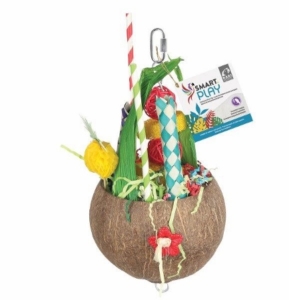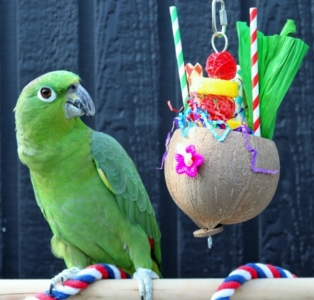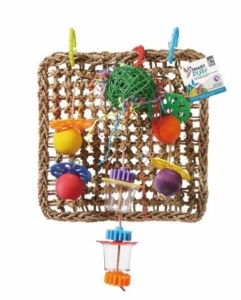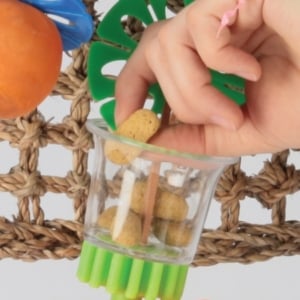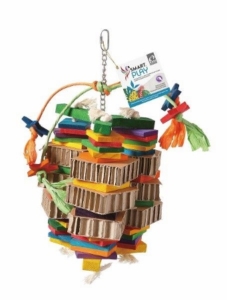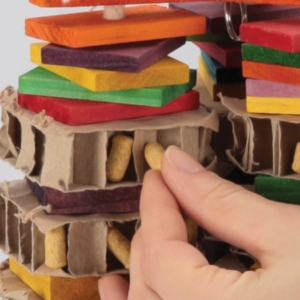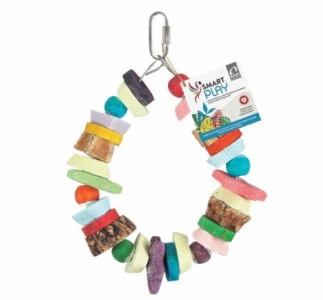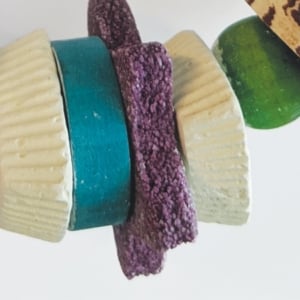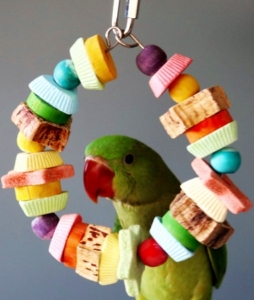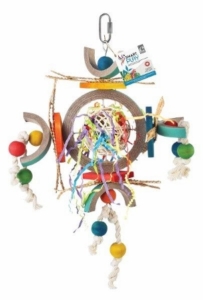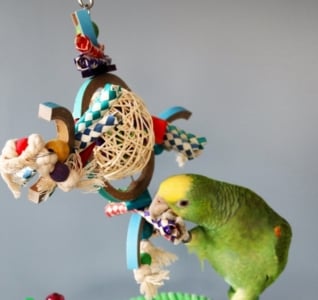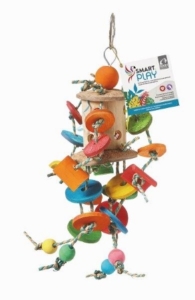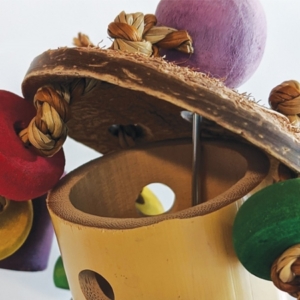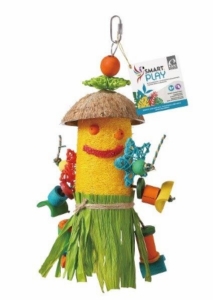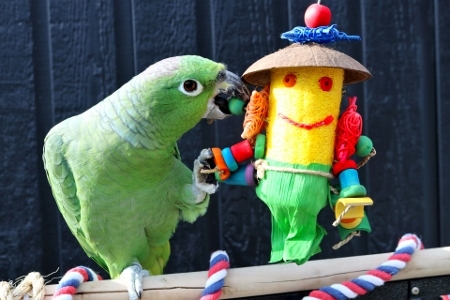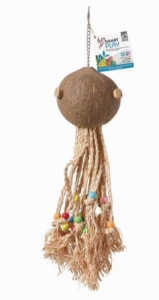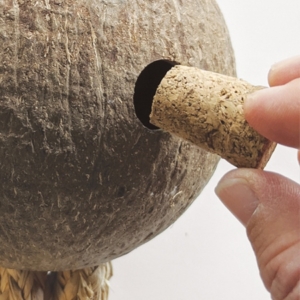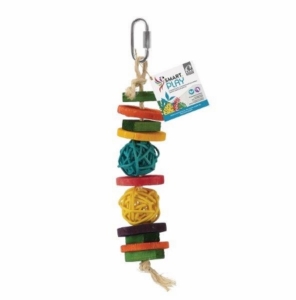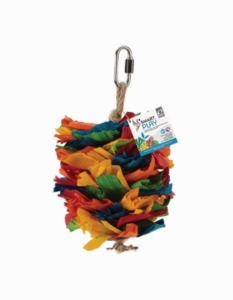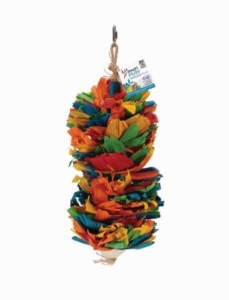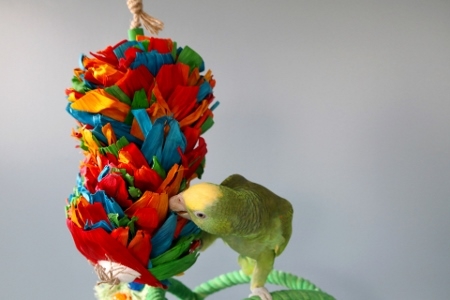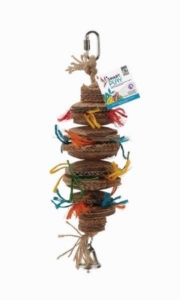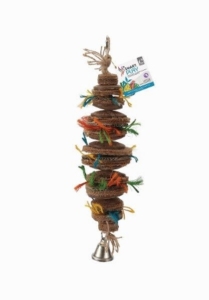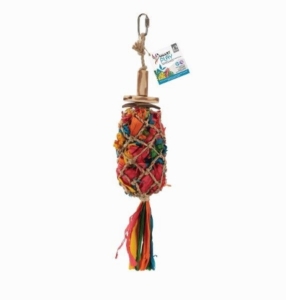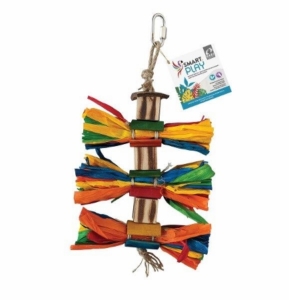We at the Hagen Group take your privacy very seriously and as such we have updated our privacy and cookies policy to make it clearer how we use your personal data, including how we use cookies and similar technologies (“cookies”) to help give you the best experience on our site and to show you relevant advertising. If you continue to use this site, we’ll assume that you’re happy to receive all cookies. Privacy Policy
Foraging Toys for Birds
HARI SMART.PLAY Foraging Toys
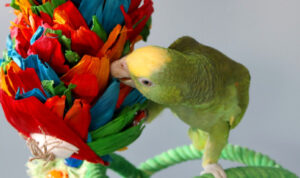
In the wild, 80% of a bird’s waking hours are spent foraging which is an essential form of enrichment. Providing parrots with enrichment activities can be an ongoing challenge, and parrot caretakers often need help getting started. But creating foraging opportunities for your birds is not difficult. When food is incorporated into the toys, caretakers will understand how important foraging is for parrots. Companion parrots will stay interested much longer when enrichment foods such as extruded granules or small nuts & seeds are hidden within the toy.
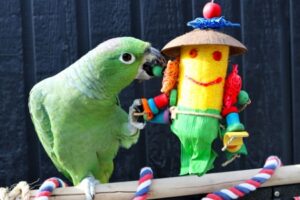 Natural Materials
Natural Materials
Many of the materials used in the the toys are natural materials such as bamboo, sisal, cocona, coconut, seagrass, loofah, willow, pinewood, and sea shells. The colours used in the toys are made from non-toxic vegetable dyes. HARI SMART.PLAY foraging toys come with either an appropriately sized pear-shaped or d-shaped quick link.
For the Health and Well Being of Your Bird
Foraging toys offer a powerful medium for nourishment, play exercise, and social interaction.
- Toys available in a range of size suitable for all hookbills
- Encourages foraging and preening
- Relieves boredom and helps prevent feather plucking
- Provides mental and physical stimulation
- Helps relieve anxiety by providing entertainment
Available Sizes
| Item# | Description | Dimensions | For Parrot Size |
| 81004 | Coconut Merry-Go-Round | 35cm (13.8″) H | Ø 13.5 cm (5″) | M |
| 81006 | Space Station (S) | 27cm (10.6″) H | 20cm (7.9″) W | S/M |
| 81007 | Space Station (L) | 33cm (13″) H | 30cm (11.8″) W | M/L |
| 81011 | Triple Dynamite | 27cm (10.6″) H | S/M |
| 81012 | Octopus | 45cm (17.7″) H | Ø 13.5 cm (5″) | M/L |
| 81013 | Loofah Man | 27cm (10.6″) H | Ø 13.5 cm (5″) | M |
| 81015 | Colada | 21cm (8.3″) H | Ø 13.5 cm (5″) | M |
| 81019 | Foraging Wall | 30cm (12″) H | 30cm (12″) W | M/L |
| 81022 | Cookie Ring | 15cm (6″) H | Ø 18 cm (7.1″) | S/M |
| 81024 | Wicker Wood Fun | 20cm (7.9″) H | S |
| 81025 | Corn Silk Cascade (S) | 22cm (8.7″) H | Ø 12 cm (4.7″) | M |
| 81026 | Corn Silk Cascade (L) | 43cm (17″) H | Ø 16 cm (6.3″) | M/L |
| 81027 | Venus (S) | 27cm (10.6″) H | S |
| 81028 | Venus (L) | 33cm (13″) H | M |
| 81081 | Catch of the Day | 40cm (15.8″) H | S/M |
| 81082 | Rollie Pollie | 30cm (11.8″) H | 16cm (6.3″) W | M |
Introducing Foraging Education To Your Bird
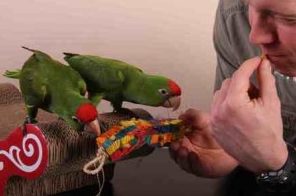
Purchasing or creating two foraging devices or activities of simple skills (one for yourself and the other for your parrot) that easily reveals hidden morsels and requires almost no dexterity, agility and ingenuity is the best way to introduce foraging. Ensure the parrot is familiar with the materials, textures, shapes and colors. Simply place granules in both devices, foraging toys or materials. Forage through yours finding morsels and exclaiming with excitement, also tasting the morsels. The parrot will quickly catch on and realize the potential; in fact your bird may start without you! The guidance, mentorship and quality time spent during this activity as well as the sense of accomplishment the bird has experienced with his mentor is beneficial.
Parrots are extremely inquisitive and intelligent. They can acquire skills quite rapidly and proceed to engage in more challenging foraging activities at an astonishing rate. Once the bird has acquired basic skills with the introductory foraging education, it can be introduced to participate in Intermediate foraging activities (i.e. foraging toy that requires more skills to reach and manipulate). Extreme foraging is the ultimate goal. Dexterity, balance, intelligence, confidence, fitness and the inquisitive mind will be challenged and rewarded.
Health benefits of foraging with your bird
Frequently engaging in foraging activities with your parrot as well as observing his behavior and demeanor can help you recognize signs of discomfort or distress. Recognizing your parrots daily playing and foraging habits and skills can reveal preoccupying health concerns. A bird that used to engage that no longer has the strength, confidence, balance or interest can signal a sickness, discomfort or injury (i.e pododermatitis,/bumble foot, central nervous system disorders, an ear infection affecting balance).
What foods can you use in the foraging activities?
Tropican High Performance
Unfortunately, most caretakers believe their birds will not engage in foraging unless fatty seeds and nuts are used to entice them in these foraging toys. Extruded granules or morsels are rarely used in foraging, yet we believe it is a great place to use them, as these are more likely to be eaten if they are found, as they will be perceived as a rewarding treat. If the foraging set-ups are creative enough your parrot could perhaps reach close to the 70% of his extruded diet consumption by foraging throughout the day. At HARI, we like to implement our parrot’s foraging instincts with optimal nutritional opportunities. We suggest Tropican High Performance morsels (granules, sticks and biscuits) of various sizes and shapes, regardless of the species, to be used in the foraging activities, as the higher palatability, due to the richness of this formula, will entice the less experienced. Surprisingly, some larger parrot species (i.e. Goffin cockatoo and Macaws) relish the discovery of the smaller granules as well as the larger biscuits. Whereas the as a smaller species such as conures enjoy holding while eating sticks they have found embedded in the foraging. The lifetime formulas can be used for the avid foragers that are eating a larger quantity of extruded diet.
Tropimix enrichment diets
are excellent to use in foraging activities, although ensure your bird also has motivation to eat its extruded base diet. Feeding enrichment must be explored with caution to ensure balanced nutrition and eating habits are maintained.
Soft foods such as fruits, veggies, beans, quinoa, sprouts, etc. are not recommended to be placed inside foraging devices as they perish quickly. These foods are also unhygienic to use in foraging devices or materials, as they can be hard to remove or clean.
Foraging Education
If your parrot is unskilled at foraging due to lack of mentorship, opportunity or knowledge, the caretaker can easily teach these foraging skills. Mentorship plays a key role in learning to forage. In the presence of other flock members in nature, birds mimic and play out what is going on in their environment. Companion parrots will learn from parental guidance, clutch or flock mates or from a mentoring caretaker. Videos of birds foraging in the wild can mimic a flock and give the assurance and sense of being (confidence and guidance) needed to carry out this behavior. Parrots that flock together and engage in foraging at a site chosen by seasoned flock members are more likely to engage in this activity, while these mentors keep an eye out for any predator that might pose threat to the flock.

Interactive Foraging Sessions
Caretakers should participate in foraging sessions with their cherished feathered companions. An interactive foraging activity can help create a healthy relationship of mentorship with your feathered companion, especially with a recently re-homed bird. We believe the value of participating in this activity with you bird will be more rewarding and through guidance will positively reinforce the relationship than merely handing out a treat to gain their affection.
Assorted Foraging
Acrylic foraging devices are sturdy and are more likely to endure your parrot, especially if he is an avid and experienced forager. Cardboard devices are a great way to introduce your bird to a safe and easily destructible foraging experience. Morsels of different shapes and sizes can easily be squeezed into the textured holes disposable toys provide, such as on a cat-scratch post.
Large foraging devices with many parts attached can easily have some of their smaller components when these fall apart recycled to use as foot toys, provided they are still safe to offer. They can be stored in a bin all together and brought out to add to the foraging station.
Foraging can be offered in the day cage for entertainment when no one is home. Should you be busy preparing food for supper, your parrot could be located close-by under supervision on an activity center or tabletop where his favorite foraging toys can be installed. Be aware of your bird’s accessibility to anything that might pose a threat if he is near the kitchen.
Popular Articles
-
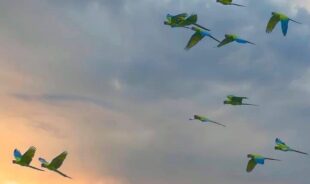
HARI/Loro Parque Lifetime Membership Sponsorships
HARI/Hagen Group Announces Loro Parque Foundation Lifetime Membership Sponsorship of Dr. Lora Kim Joyner of One Earth Conservation and Enrique Pucci of Ara Manzanillo
Read More -
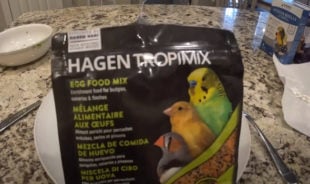
Supercharged Egg Food for Birds
Supercharged egg food recipe for caged and aviary birds.
Read More -
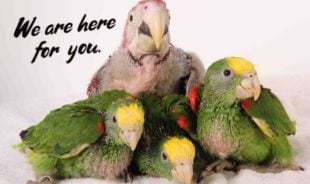
Our Promise To You During COVID-19
With growing global concerns around COVID-19 (“coronavirus”), we hope you, your family and your precious pets remain healthy and safe. With so many unknowns presented during COVID-19, we want to provide you with an update on our response to date and our commitment to you moving forward.
Read More




